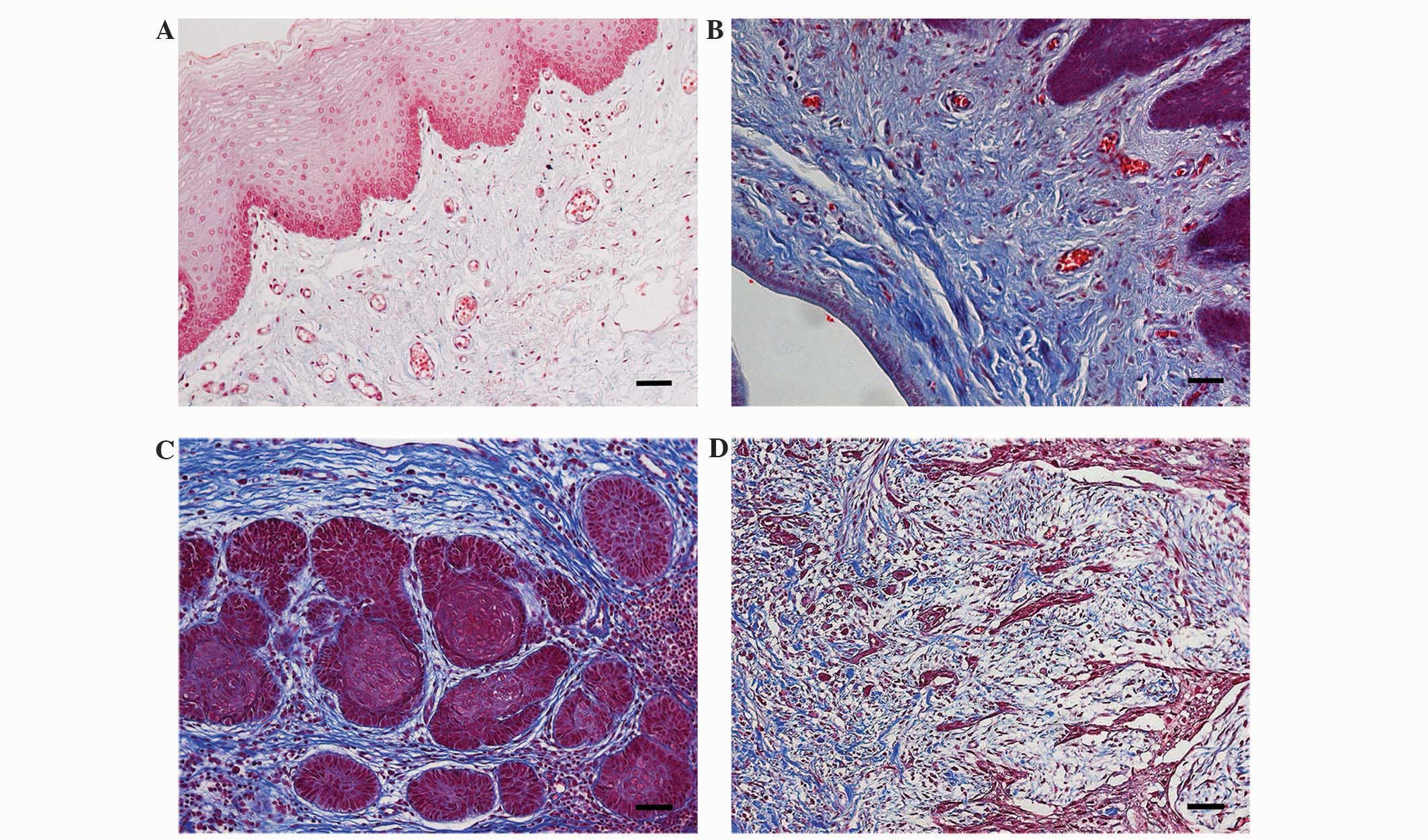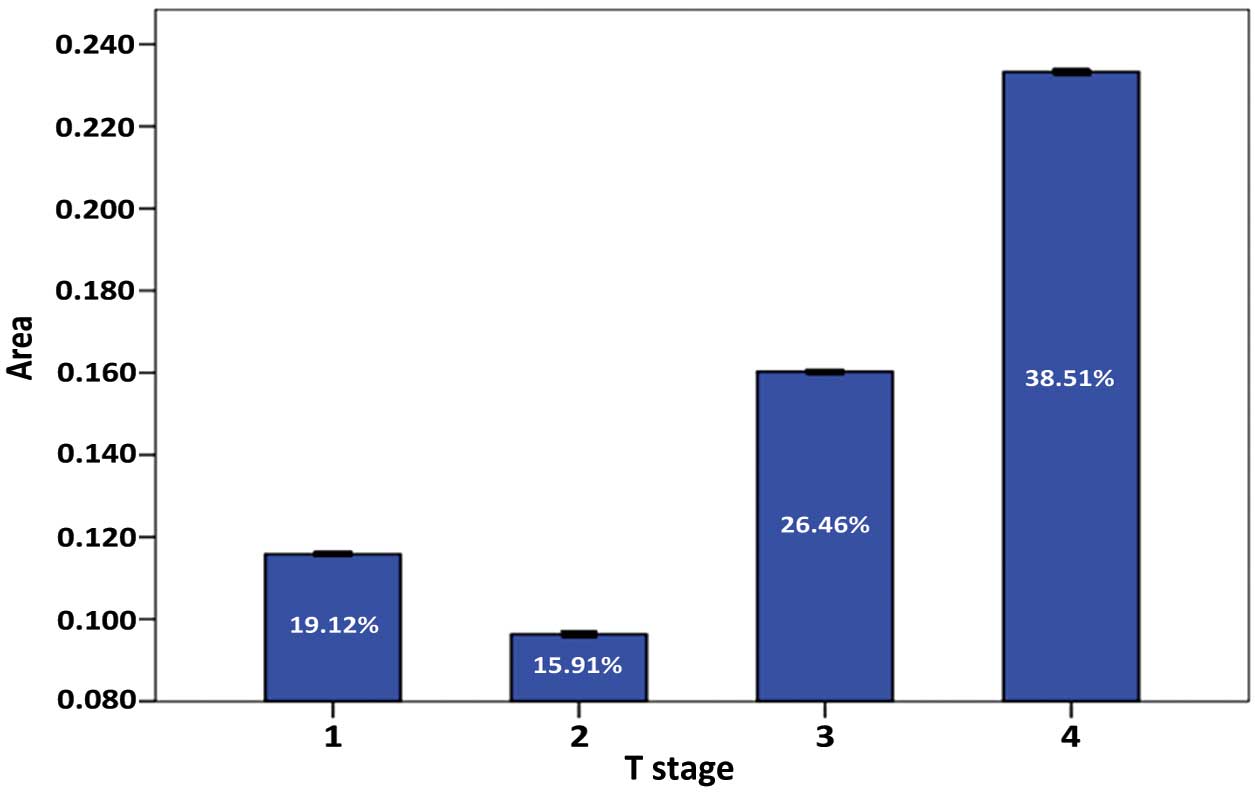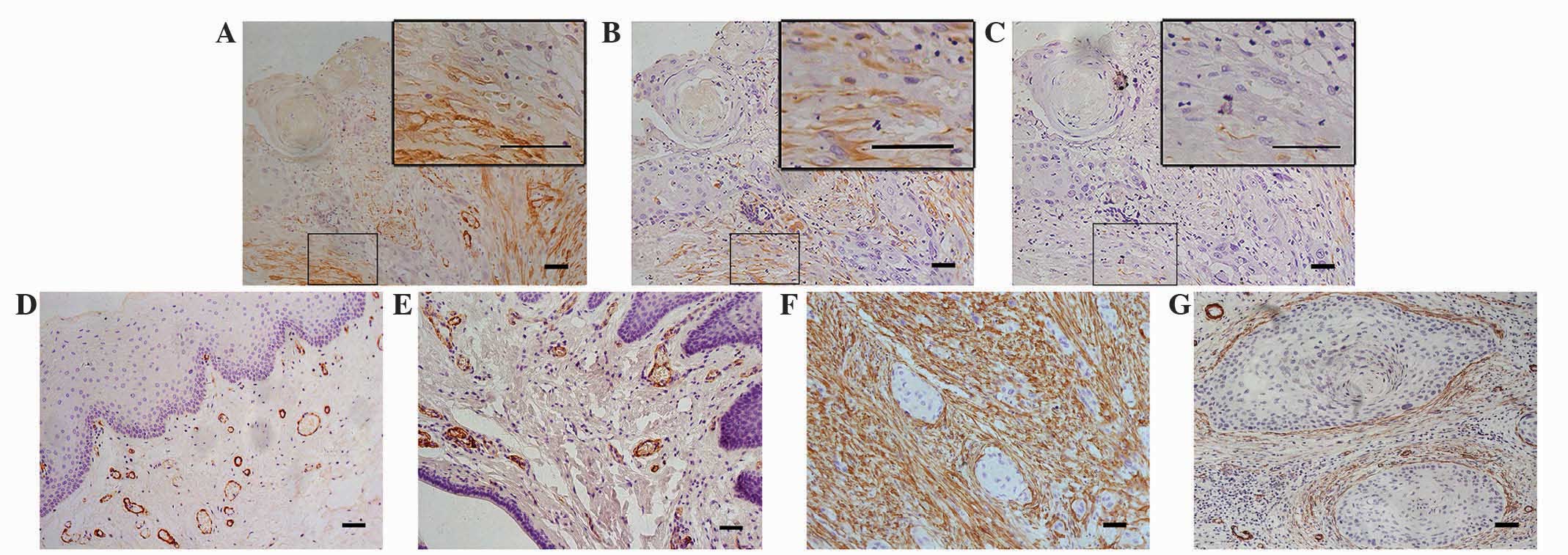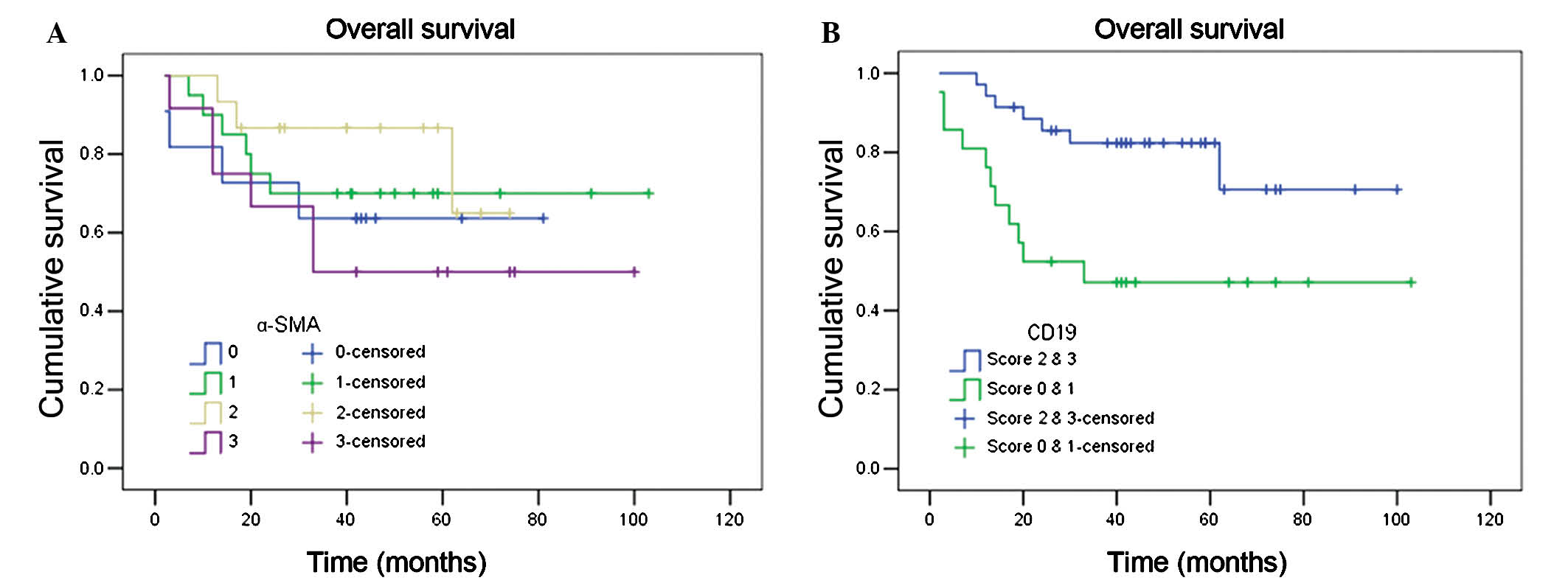|
1
|
Albini A and Sporn MB: The tumour
microenvironment as a target for chemoprevention. Nat Rev Cancer.
7:139–147. 2007. View
Article : Google Scholar : PubMed/NCBI
|
|
2
|
Jemal A, Siegel R, Xu J and Ward E: Cancer
statistics, 2010. CA Cancer J Clin. 60:277–300. 2010. View Article : Google Scholar : PubMed/NCBI
|
|
3
|
Aggarwal BB, Vijayalekshmi RV and Sung B:
Targeting inflammatory pathways for prevention and therapy of
cancer: Short-term friend, long-term foe. Clin Cancer Res.
15:425–430. 2009. View Article : Google Scholar : PubMed/NCBI
|
|
4
|
Erdag G, Schaefer JT, Smolkin ME, Deacon
DH, Shea SM, Dengel LT, Patterson JW and Slingluff CL Jr:
Immunotype and immunohistologic characteristics of
tumor-infiltrating immune cells are associated with clinical
outcome in metastatic melanoma. Cancer Res. 72:1070–1080. 2012.
View Article : Google Scholar : PubMed/NCBI
|
|
5
|
Nielsen JS, Sahota RA, Milne K, Kost SE,
Nesslinger NJ, Watson PH and Nelson BH: CD20+ tumor-infiltrating
lymphocytes have an atypical CD27- memory phenotype and together
with CD8+ T cells promote favorable prognosis in ovarian cancer.
Clin Cancer Res. 18:3281–3292. 2012. View Article : Google Scholar : PubMed/NCBI
|
|
6
|
Shi JY, Gao Q, Wang ZC, Zhou J, Wang XY,
Min ZH, Shi YH, Shi GM, Ding ZB, Ke AW, et al: Margin-infiltrating
CD20(+) B cells display an atypical memory phenotype and correlate
with favorable prognosis in hepatocellular carcinoma. Clin Cancer
Res. 19:5994–6005. 2013. View Article : Google Scholar : PubMed/NCBI
|
|
7
|
François A, Chatelus E, Wachsmann D,
Sibilia J, Bahram S, Alsaleh G and Gottenberg JE: B lymphocytes and
B-cell activating factor promote collagen and profibrotic markers
expression by dermal fibroblasts in systemic sclerosis. Arthritis
Res Ther. 15:R1682013. View
Article : Google Scholar : PubMed/NCBI
|
|
8
|
Shimoda M, Mellody KT and Orimo A:
Carcinoma-associated fibroblasts are a rate-limiting determinant
for tumour progression. Semin Cell Dev Biol. 21:19–25. 2010.
View Article : Google Scholar : PubMed/NCBI
|
|
9
|
Räsänen K and Vaheri A: Activation of
fibroblasts in cancer stroma. Exp Cell Res. 316:2713–2722. 2010.
View Article : Google Scholar : PubMed/NCBI
|
|
10
|
Tripathi M, Billet S and Bhowmick NA:
Understanding the role of stromal fibroblasts in cancer
progression. Cell Adh Migr. 6:231–235. 2012. View Article : Google Scholar : PubMed/NCBI
|
|
11
|
DeFilippis RA, Chang H, Dumont N, Rabban
JT, Chen YY, Fontenay GV, Berman HK, Gauthier ML, Zhao J, Hu D, et
al: CD36 repression activates a multicellular stromal program
shared by high mammographic density and tumor tissues. Cancer
Discov. 2:826–839. 2012. View Article : Google Scholar : PubMed/NCBI
|
|
12
|
Wheeler SE, Shi H, Lin F, Dasari S,
Bednash J, Thorne S, Watkins S, Joshi R and Thomas SM: Enhancement
of head and neck squamous cell carcinoma proliferation, invasion,
and metastasis by tumor-associated fibroblasts in preclinical
models. Head Neck. 36:385–392. 2014. View Article : Google Scholar : PubMed/NCBI
|
|
13
|
Sobin LH and Wittekind C: TNM
Classification of Malignant Tumours (6th). Hoboken, NJ: John Wiley
& Sons. 2002.
|
|
14
|
Thompson L: World Health Organization
classification of tumours: Pathology and genetics of head and neck
tumours. Ear Nose Throat J. 85:742006.PubMed/NCBI
|
|
15
|
Etemad-Moghadam S, Khalili M, Tirgary F
and Alaeddini M: Evaluation of myofibroblasts in oral epithelial
dysplasia and squamous cell carcinoma. J Oral Pathol Med.
38:639–643. 2009. View Article : Google Scholar : PubMed/NCBI
|
|
16
|
Chaudhary M, Gadbail AR, Vidhale G,
Gadbail Mankar MP, Gondivkar SM, Gawande M and Patil S: Comparison
of myofibroblasts expression in oral squamous cell carcinoma,
verrucous carcinoma, high risk epithelial dysplasia, low risk
epithelial dysplasia and normal oral mucosa. Head Neck Pathol.
6:305–313. 2012. View Article : Google Scholar : PubMed/NCBI
|
|
17
|
Thode C, Jørgensen TG, Dabelsteen E,
Mackenzie I and Dabelsteen S: Significance of myofibroblasts in
oral squamous cell carcinoma. J Oral Pathol Med. 40:201–207. 2011.
View Article : Google Scholar : PubMed/NCBI
|
|
18
|
Maletzki C, Jahnke A, Ostwald C, Klar E,
Prall F and Linnebacher M: Ex-vivo clonally expanded B lymphocytes
infiltrating colorectal carcinoma are of mature immunophenotype and
produce functional IgG. PLoS One. 7:e326392012. View Article : Google Scholar : PubMed/NCBI
|
|
19
|
Dumont N, Liu B, Defilippis RA, Chang H,
Rabban JT, Karnezis AN, Tjoe JA, Marx J, Parvin B and Tlsty TD:
Breast fibroblasts modulate early dissemination, tumorigenesis and
metastasis through alteration of extracellular matrix
characteristics. Neoplasia. 15:249–262. 2013. View Article : Google Scholar : PubMed/NCBI
|
|
20
|
De Wever O, Van Bockstal M, Mareel M,
Hendrix A and Bracke M: Carcinoma-associated fibroblasts provide
operational flexibility in metastasis. Semin Cancer Biol. 25:33–46.
2014. View Article : Google Scholar : PubMed/NCBI
|
|
21
|
Tlsty TD and Coussens LM: Tumor stroma and
regulation of cancer development. Annu Rev Pathol. 1:119–150. 2006.
View Article : Google Scholar : PubMed/NCBI
|
|
22
|
Li T, Sun L, Miller N, Woo J, Hulse-Smith
L, Tsao MS, Khokha R, Martin L and Boyd N: The association of
measured breast tissue characteristics with mammographic density
and other risk factors for breast cancer. Cancer Epidemiol
Biomarkers Prev. 14:343–349. 2005. View Article : Google Scholar : PubMed/NCBI
|
|
23
|
Agarwal P and Ballabh R: Expression of
type IV collagen in different histological grades of oral squamous
cell carcinoma: An immunohistochemical study. J Cancer Res Ther.
9:272–275. 2013. View Article : Google Scholar : PubMed/NCBI
|
|
24
|
Olkhanud PB, Damdinsuren B, Bodogai M,
Gress RE, Sen R, Wejksza K, Malchinkhuu E, Wersto RP and Biragyn A:
Tumor-evoked regulatory B cells promote breast cancer metastasis by
converting resting CD4+ T cells to T-regulatory cells.
Cancer Res. 71:3505–3515. 2011. View Article : Google Scholar : PubMed/NCBI
|
|
25
|
Fremd C, Schuetz F, Sohn C, Beckhove P and
Domschke C: B cell-regulated immune responses in tumor models and
cancer patients. Oncoimmunology. 2:e254432013. View Article : Google Scholar : PubMed/NCBI
|
|
26
|
Nelson BH: CD20+ B cells: The other
tumor-infiltrating lymphocytes. J Immunol. 185:4977–4982. 2010.
View Article : Google Scholar : PubMed/NCBI
|
|
27
|
Mahmoud SM, Lee AH, Paish EC, Macmillan
RD, Ellis IO and Green AR: The prognostic significance of B
lymphocytes in invasive carcinoma of the breast. Breast Cancer Res
Treat. 132:545–553. 2012. View Article : Google Scholar : PubMed/NCBI
|
|
28
|
Erez N, Truitt M, Olson P, Arron ST and
Hanahan D: Cancer-associated fibroblasts are activated in incipient
neoplasia to orchestrate tumor-promotinginflammation in an
NF-kappaB-dependent manner. Cancer Cell. 17:135–147. 2010.
View Article : Google Scholar : PubMed/NCBI
|
|
29
|
De Wever O, Demetter P, Mareel M and
Bracke M: Stromal myofibroblasts are drivers of invasive cancer
growth. Int J Cancer. 123:2229–2238. 2008. View Article : Google Scholar : PubMed/NCBI
|















